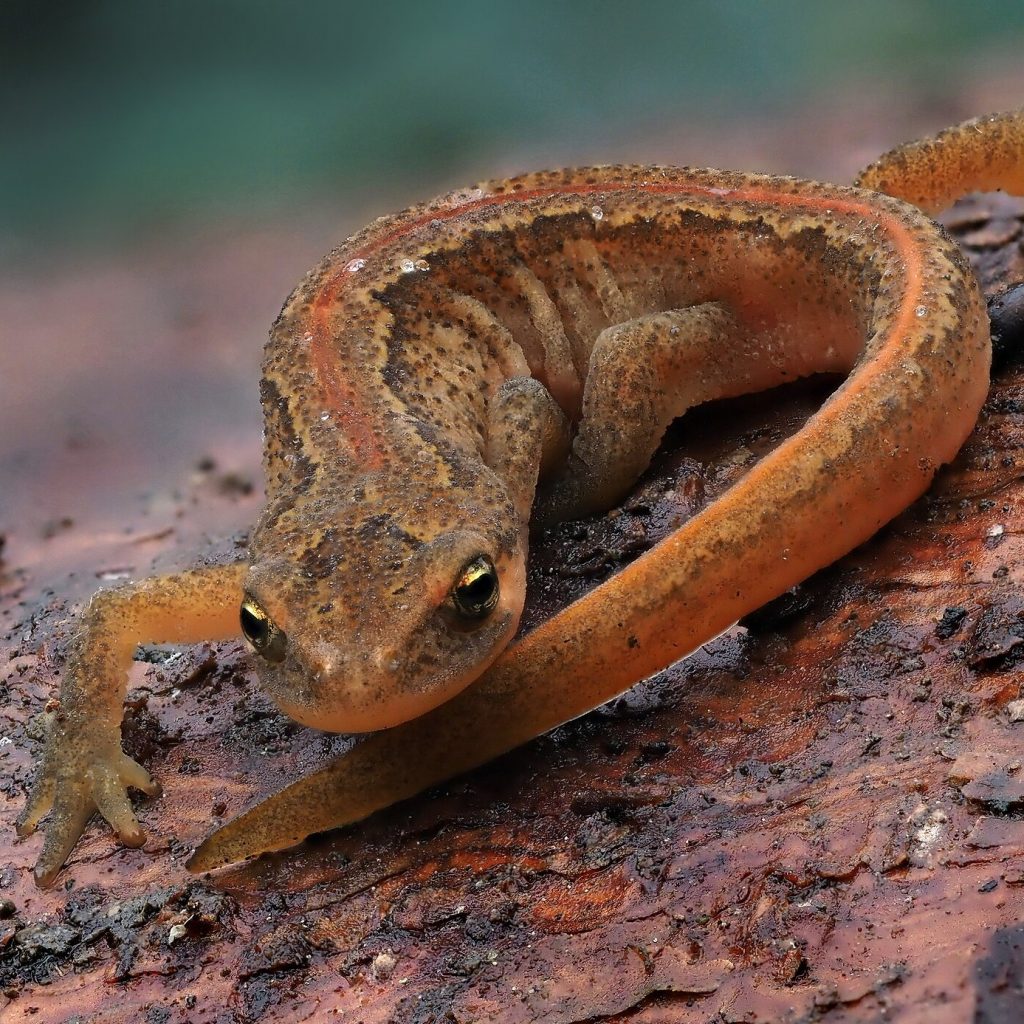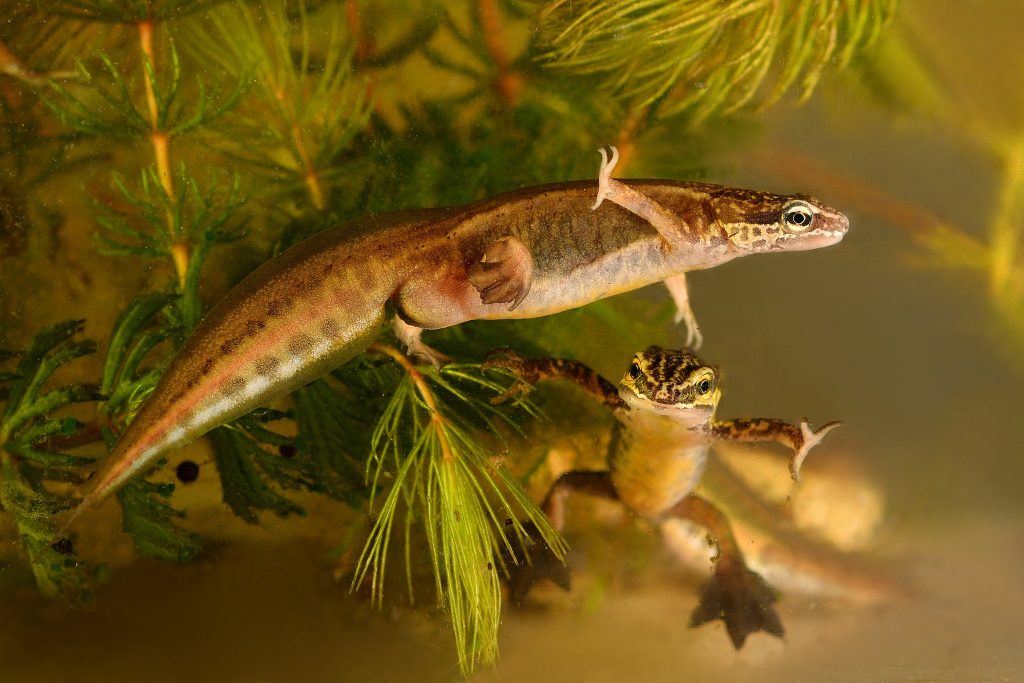
For those of you with garden ponds, keep an eye out for Palmate Newts enjoying the water in spring.
Photo: Frank Vassen from Brussels, Belgium, CC BY 2.0, via Wikimedia Commons
Scientific name: Lissotriton helveticus (formerly Triturus helveticus)
Cornish name: Pedrevan is the word for a newt
Conservation status: In the UK, protected under the Wildlife and Countryside Act, 1981
What to look for:
- Appearance: Variable in colour, including brown, grey and greenish hues. Smooth-skinned. Underside is pinkish-yellow, usually dark-spotted, but the pink-coloured throat has no spots. Breeding males develop dark webs on their hind feet and a filament at their tail end.
- Size: Up to 9 cm long (females are slightly larger than males)
- Where: Not as common in the UK as the Common (or Smooth) Newt, but still fairly widespread. It is the only one of the three UK newt species found on The Lizard and, indeed, most of Cornwall. Generally preferring shallow pools on acid-rich heaths and moors, newts will also visit and breed in garden ponds.
- Similar species: On The Lizard, any newts spotted will be Palmate, but elsewhere it is difficult to tell them apart from Common Newts. For females, the lack of throat spots on Palmates is a distinguishing feature. In the breeding season, male Palmates develop black webs on their hind feet and a filament at the tip of their tail, but Common Newts are missing this feature.
There are three newt species found in the UK – the Common (or Smooth) Newt, the Crested Newt, and the Palmate Newt. Although the first of these is the most common across the country, it is only the Palmate Newt that is found in the majority of Cornwall. The species has a definite preference for ponds on acidic soils, which explains why it loves the heathlands of the south-west.
Palmate Newts are not strangers to garden ponds, either. If you have a pond, look out for them from the early spring, when they arrive to breed and lay their eggs. While we associate them, like their fellow amphibians, with water, they are terrestrial for most of the year, leaving the ponds in mid-summer to feast on insects and other invertebrates on land. In winter, they hibernate, tucking themselves away amongst roots or rocks.

Did you know…?
…The Palmate Newt is the smallest of the three UK newt species
…The name Palmate is derived from the black webbing on the hindfeet of breeding males
More information and references:
Arnold, N. and Ovenden, D., 2002. Reptiles and Amphibians: Britain & Europe (Collins Field Guide), second edition. Collins, London.
Smith, M., 1973. The British Amphibians and Reptiles (The New Naturalist series), fifth edition. Collins, London.
Published: April 2020
Author: Amanda Scott
Photos: Upper – Frank Vassen from Brussels, Belgium, CC BY 2.0, via Wikimedia Commons; lower – Gilles San Martin from Namur, Belgium, CC BY-SA 2.0; both images via Wikimedia Commons
